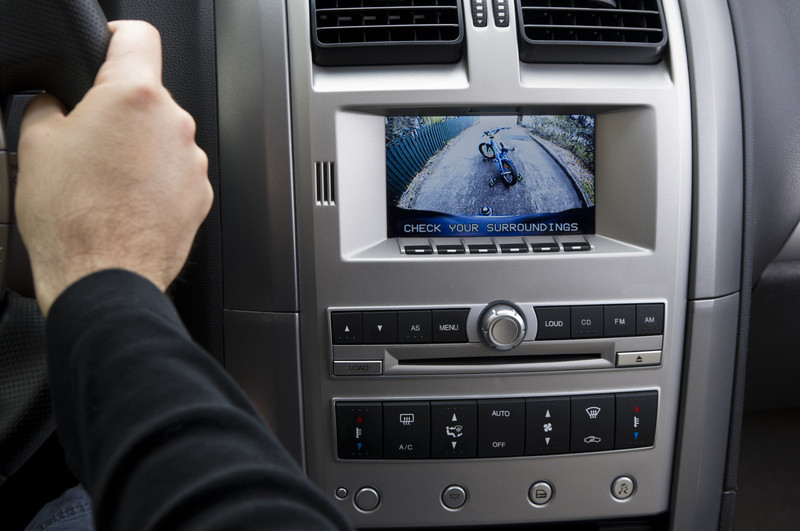The vehicles that we driver are engineering marvels that include numerous features designed to keep us safe and protected from harm as we go about our daily lives. Many safety features are obvious such as seatbelts and specially designed car seats for children but there are others that only become apparent in emergency situations such as airbags, seat belt pretensioners and anti-lock braking systems. All of these safety devices are available to help the driver to avoid accidents and protect them if an accident should occur.
Accident avoidance safety features in cars
Vehicles today have a variety of innovative options to help increase the chances of avoiding an accident and these options are available on everything from high end luxury vehicles to economy cars. These safety features in cars include active collision avoidance systems as well as options to increase visibility in critical blind spots each of which has been proven to reduce the occurrence of accidents.
- Backup Cameras: Backup cameras are mounted on the rear of the vehicle and give the driver an unobstructed view to the rear of the vehicle with a video display in the dashboard. This system helps to prevent accidents when backing up in a parking lot or avoid hitting young children or animals that are smaller in stature and less-likely to be seen.
- Reverse Backup Sensors: These sensors work as proximity detectors when the vehicle is moving in reverse. If there is an object close by the sensor will begin to beep and the frequency of the beeps will increase as you get close to the object until it is a solid warning.
- Side view Assist: This safety feature goes into play when you activate your turn signals and will alert the driver if an object is in the blind spot of the vehicle with an indicator light in the side view mirror or an audible beep that there is something there.
- Parking Assist: A newer feature that has become available is called parking assist which will take over control of the vehicle from the driver complete and the computer in the vehicle will park the car. This feature is especially good for parking in tight spaces where it is difficult to see how much room you have available.
- Adaptive Headlights: Another new feature that has been proven to reduce accidents are adaptive headlights. Adaptive headlights rotate towards the direction of travel in a turn and will illuminate potential obstructions before it is too late to avoid them.
- Front Collision Avoidance System: The front collision avoidance system employs sensors in the front of the vehicle that provide an audible warning if you are too close to the vehicle in front of you.
- Autonomous Braking: An autonomous braking system works by using sensors in the vehicle and providing a warning to the driver if they approach too closely to the vehicle in front of them but take it one step further by actively slowing the vehicle if the driver fails to do so to prevent a collision.
- Adaptive Cruise Control: This car safety feature uses front sensors while the cruise is being used and will slow the vehicle to maintain a safe distance from the vehicle in front then speed up to the cruise control setting when there are no vehicles too close.
Each of these car safety features help the driver to avoid an accident while driving and protects anyone around the vehicle who may not be in clear site.
Accident protective measure car safety features
Besides the accident avoidance safety measures there are a variety of safety features designed to protect the driver and the passengers during an accident including seatbelts, airbags (front and side), auto-pretensioners for seatbelts and even inflatable seat belts for rear passengers that disperse the force of the seatbelt over a larger area to protect the passenger from excessive bruising. Finally, the vehicle itself is designed to be a safety feature in the event of a crash. Automotive engineers design the vehicle to absorb the impact of the crash and divert the forces it creates around the vehicle and away from the passenger while keeping the engine from being pushed into the passenger cabin.
Auto Safety Ratings
Auto safety ratings have been created to give consumers a better understanding of the safety features available on a vehicle and how they compare to other vehicles. The Insurance Institute for Highway Safety (IIHS) has implemented a rating system that looks at two car safety features: crashworthiness and crash avoidance and mitigation. The IIHS uses a series of tests to rank vehicles as good, acceptable or marginal during front, side and other collision events as well as looking at the crash avoidance features that each vehicle is equipped with. Extensive testing is done both in the test garage and the test track to see how each vehicle performs and then a rating is applied to the vehicle. Vehicles that perform well can be eligible to receive the “Top Safety Pick” certification. Vehicles that under-perform can face costly redesigns or worse – an automotive recall.
No matter what type of vehicle you drive you can be happy to know that it has been evaluated and tested to ensure it meets basic standards so that if you cannot avoid an accident at least you will be protected!

